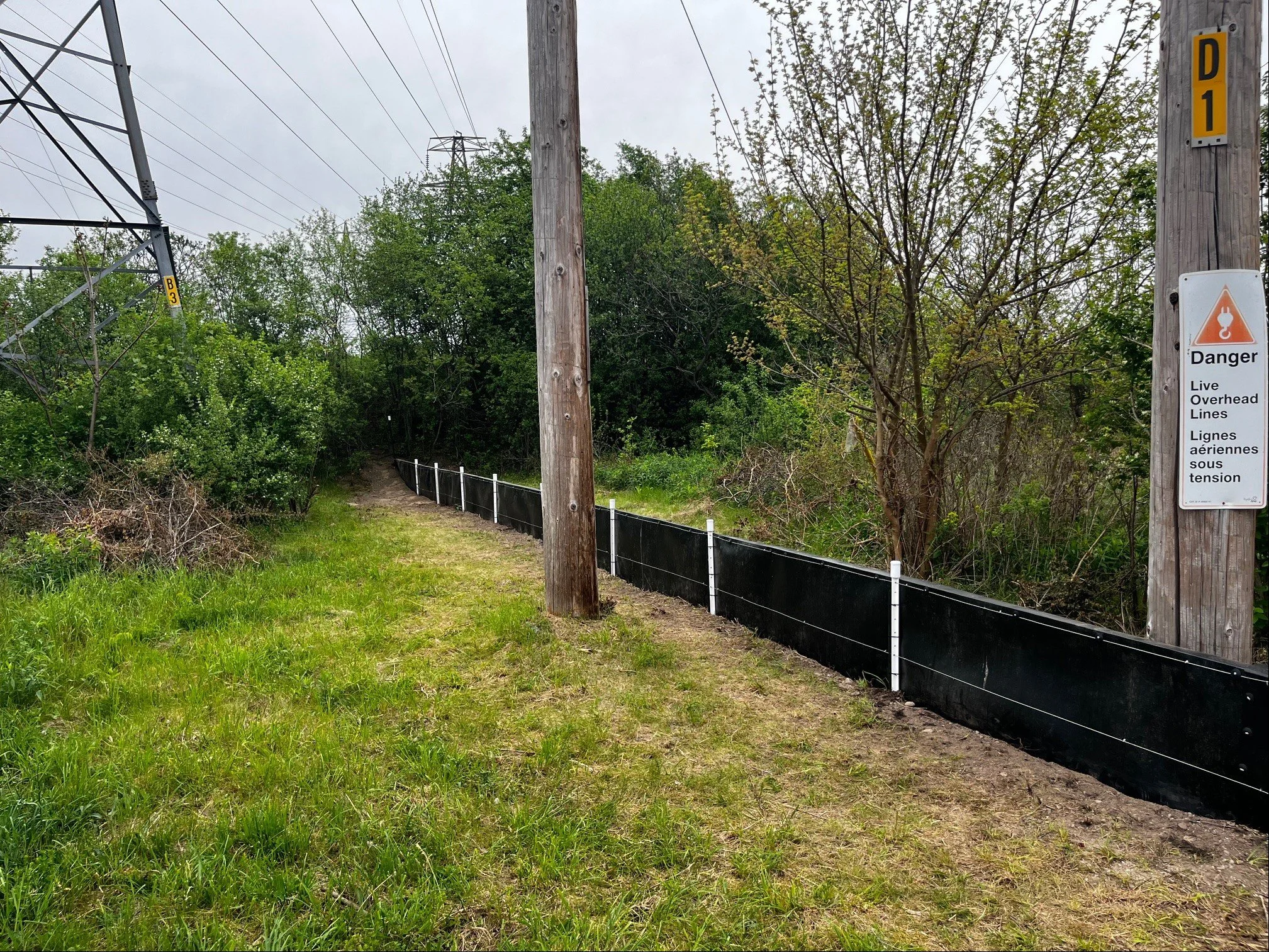
Snake Fencing
Animex wildlife fencing is designed and tested to control snake movement and exclude them from unwanted or dangerous areas. It optimizes natural snake behavior to encourage safe and fast movement away from the fence line and, unlike mesh fencing, inhibits climbing and entanglement.
Snake exclusion fencing
Roads act as ecological traps for snakes. As ectotherms, they are drawn to the warmth of highways, which increases the risk of vehicle collisions. Some species freeze when faced with traffic, further raising mortality. Poorly fenced construction sites add to the danger, as snakes may become trapped in trenches, pipework, or machinery.
Wandering species are particularly vulnerable. Studies show gopher snakes experience higher road-kill rates than rattlesnakes, especially during breeding migrations in spring and summer, and juvenile dispersal in fall. Construction sites also pose hazards, often attracting females to nest.
Planning engineers have a responsibility to reduce these impacts. Properly designed exclusion fencing, used with features such as eco-passages, can greatly reduce mortality on roads and construction sites. Fencing is also valuable for population assessment before development begins..
IMAGE: Black snake passing through an underpass after being guided by Animex fencing in a state park in the USA.
Top 5 snake species Animex is commonly used for:
Alameda whipsnake
Rattlesnake
Eastern indigo snake
Pine snake
San Francisco garter snake
Alameda whipsnake Masticophis lateralis euryxanthus
San Francisco garter snake Thamnophis sirtalis tetrataenia
Narrow-headed gartersnake Thamnophis rufipunctatus
Eastern indigo snake Drymarchon corais couperi
Pine snake Pituophis melanoleucus
Rattlesnake Crotalus sp.
Hognose snake Heterodon sp.
and more…
Height
40in is the product height most commonly used with snakes
Standard above-ground installed height 22in / 550mm (with anti-climb and anti-dig lips)
We have various fencing products suitable for snakes
Temporary
Recommended for short-term projects between 1-5 years but has an anticipated lifespan of 25 years.
Guide Price: USD $4 per ft / CAD $18.50 per m
Semi-permanent
Recommended for long-term projects of approximately 15 years but has an anticipated lifespan of 50 years.
Guide Price: USD $7.50 per ft / CAD $37 per m
Permanent
Recommended for long-term projects of approximately 25 years but has an anticipated lifespan of 50 years.
Guide Price: USD $30.50 per ft / CAD $153.50 per m
Guide prices are based on Animex fencing material and standard fixings and fasteners. This does not include support posts or installation. AMX-48, AMX-60 or a smaller customized, unlisted product may be more appropriate for some projects. Please contact us if you have any concerns or questions about the height or type of fence that is best for your project.











